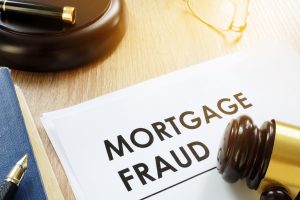 LexisNexis has released its first True Cost of Fraud for Real Estate study which examines fraud trends for the United States based on the answers of 360 risk and fraud management executives which found that mortgage lenders are especially vulnerable through online and mobile channels.
LexisNexis has released its first True Cost of Fraud for Real Estate study which examines fraud trends for the United States based on the answers of 360 risk and fraud management executives which found that mortgage lenders are especially vulnerable through online and mobile channels.
The report will also track “pain points” related to fraud detection, prevention, and the customer experience. It also tracks the time and resources that mortgage originators and servicers applied to prevent attacks.
All in all, the report found that for every $1 of fraud, it cost $5.34 to recover that money, while for non-depository originators , such as mortgage lending companies, spend an average of $4.66 to recover every $1 of fraud.
According to LexisNexis, a large majority of firms report that overall fraud has increased during the past 1-3 years with consumer fraud accounting for about two-thirds of lender and servicer fraud losses over the last 12 months. Most agreed that fraud activity has only increased during the pandemic, with all channels seeing increased fraud, not just mobile and online portals.
Key takeaways from the report include:
- Digital Transactional Impacts on Fraud: Fraud costs are largely coming from consumers seeking to purchase a new home through online and mobile transactions. Direct-to-consumer (retail) and correspondent lending are the leading transaction types, with direct-to-customers representing a larger share of fraud costs and average monthly attacks. However, depository originators and title/settlement companies also experience a sizeable portion of fraud losses from construction-related loans.
- Top Fraud Challenges: Identity verification is a top challenge for mortgage originators, servicers and title/settlement companies. The challenge involves assessing digital identity attributes such as email/phone number and identifying synthetic identities. This contributes to other issues related to customer friction, the inability to detect malicious bots and difficulties distinguishing between legitimate and fake consumers. The pandemic and growing mobile channel have added fuel to these issues and increase risk of fraud with call center/phone-based interactions.
- Best Practices: Findings show that firms using a multi-layered solutions approach integrated with cybersecurity and digital customer experience operations can lower fraud and subsequent costs while improving identity verification and fraud detection effectiveness. Integrating fraud prevention with cybersecurity operations throughout the digital customer experience and layering in supportive capabilities such as artificial intelligence and machine learning further strengthens fraud prevention.
"Although the future is uncertain, it's safe to assume that the accelerated movement to online/mobile transactions will continue to grow and that mortgage originators, servicers and title/settlement companies should build out and enhance the digital customer experience while protecting against fraud," said Dawn Hill, Director of Real Estate Fraud and Identity Strategy at LexisNexis Risk Solutions. "A successful fraud detection and prevention approach involves an integration of technology, cybersecurity and digital experience operations in a way that addresses the unique risks from different transaction channels and payment methods, as well as by individuals and types of transactions."
Click here to download a copy of the 57-page report via LexisNexis’s website.

 DSNews The homepage of the servicing industry
DSNews The homepage of the servicing industry









